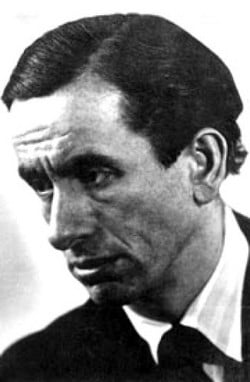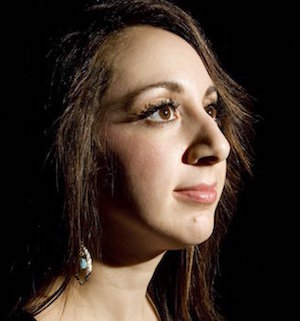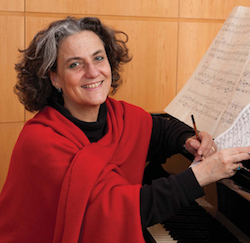
Do you know the paintings of Ceija Stojka, the poetry of Abraham Sutzkever, the music of Hans Krása? Until this week, I’d never heard of any of these artists whose lives were either annihilated or irrevocably altered by the Nazis. Fortunately for me, Music of Remembrance (MOR) — the Seattle-based group dedicated to remembering the Holocaust — returned on May 24 to San Francisco’s Conservatory of Music. The concert was in equal parts educational and musically excellent; I only wish more people had attended.

Wednesday’s program opened with a gem by Hans Krása, a Czech-Jewish composer murdered at Auschwitz. In Dance, a fast-paced movement for string trio (Mikhail Shmidt, violin; Susan Gulkis Assadi, viola; and Walter Gray, cello), French-flavored whole-tone harmonies mix with melodies alternately Bohemian and Viennese in feel, always with interesting results.
In an arrangement by Jaroslavas Cechanovičius for mezzo-soprano (Catherine Cook) and string quintet, popular songs from the Vilna Ghetto sprang to life. From the nostalgic “Vilna, Vilna” to the rousing “Let our Salvation Come,” the ensemble’s performance was of the highest standard, each successive verse a pleasure to hear.
These songs, in fact, are much more effective than the Music of Remembrance-commissioned cycle by Lori Laitman. Text by Abraham Sutzkever, a Vilna Ghetto survivor, evokes the grimmest of imagery (cartloads of shoes taken from the dead, for example) with quiet elegance. Unfortunately, The Seed of Dream, Laitman’s 2004 work for voice with cello and piano, sells this poetry short.
She’s a prolific composer of songs, and it shows: Lines sparkle with text-painting and the writing lies well. But this music is too sanitized to have much effect. Most troublingly, Laitman’s material lacks specificity: with different text, some of this material could be used to dramatize Little Women or Pride and Prejudice. Even under Cook, an expressive singer, The Seed of Dream feels like a famous opera aria sung in concert, divorced from story, and thus, emotional weight. We have Schoenberg’s A Survivor from Warsaw; these art songs aren’t current or necessary.

What is? Mary Kouyoumdjian’s to open myself, to scream, the newest MOR commission whose premiere was the cornerstone of Wednesday’s program. The multimedia quintet is inspired by Ceija Stojka, an Austrian-Rom who survived three death camps and became both an author and artist. Stunningly intricate, animated cells, created by Syrian-Armenian artist Kevork Mourad, incorporate Stojka’s paintings.
The distortion created by amplified live musicians, combined with a prerecorded track, evoke a crackling old klezmer recording, and a bucolic, primary-colored painting by Stojka fills the screen. Then, the harmonies slide downward, droning with increasing urgency. The icy sounds of amplified tremolo accompany a stark, black-and-white painting of barbed wire, through which a human figure approaches — only to disappear into tufts of grass, as if erased from record. As electronic crackling fills the speakers, a sheet of abstract scribbles takes over the screen.
Notes bend and break in sumptuously grotesque chords; against piercing high tones, impossible runs create frenzy. Toward the end, each player seems to test the volume of his instrument; it’s deafening.
Yet both the music and art in to open myself, to scream are ephemeral: Everything distorts, slides into the next, and eventually, disappears. Kouyoumdjian’s work, even as it manages to communicate some of the horrors of the Holocaust, reminds the audience that it’s impossible to know all the stories: as MOR artistic director Mina Miller said, “The vastness defies comprehension.”
 Betty Olivero
Betty Olivero


